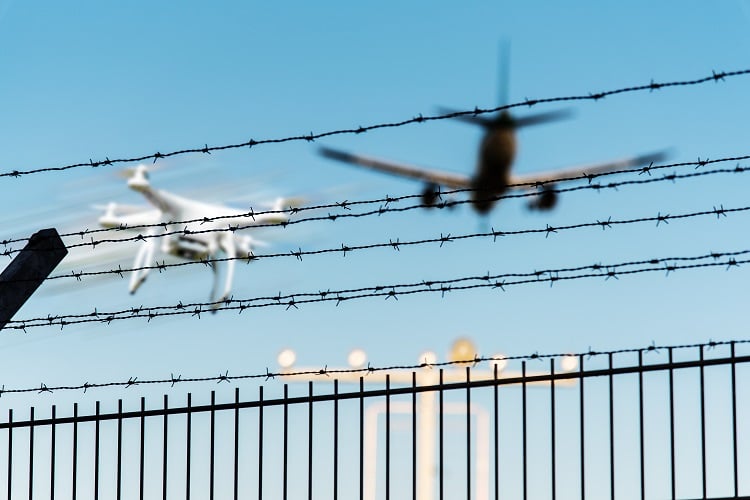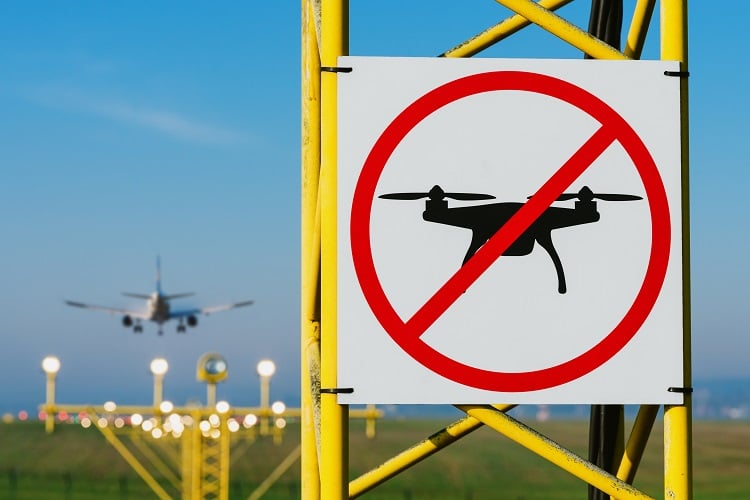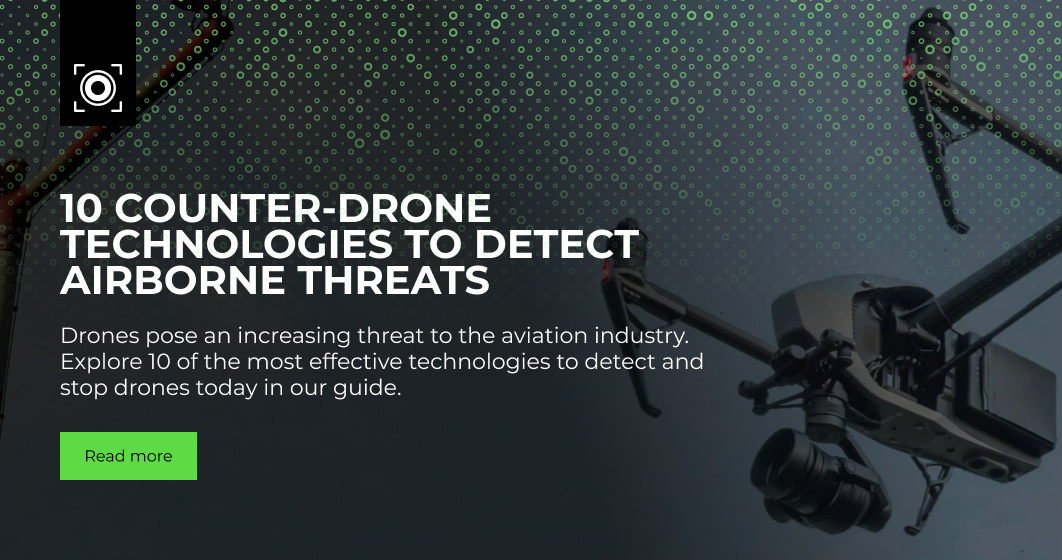In December 2018, reports of drones flying near the runway of Gatwick Airport brought operations to a halt. The British airport was in the midst of its busiest holiday season yet, with 2.9 million passengers expected to travel in December alone.
The immediate security and safety concerns of drones flying dangerously close to active airspace forced the airport to shut down for 36 hours, subsequently cancelling and grounding hundreds of flights within a three-day period.
This incident cost Gatwick Airport significant losses to both profitability and customer trust, affecting over 100,000 passenger holidays and travel plans within a short space of time. What’s more, it’s estimated that the disruption cost both the airport and its airline operators over £50 million in lost revenue, including the financial impact caused by drones and customer welfare costs.

The Gatwick Drone Incident
While the UK government and aviation industry were quick to respond, a flurry of media coverage shone a much-needed light on the incident to the public.
The commercial availability of unmanned aerial vehicles (UAVs) is an increasing security threat to airspaces, public areas, and more – due to the accessibility of low-cost drone technology. Reports show that during the same year of the Gatwick incident, the number of times a drone endangered an aircraft in UK airspace rose by more than a third. A pertinent question arose from the scrutiny by the media and regulatory bodies: did Gatwick Airport do enough to prevent this incident from occurring?
The reaction was fast. Gatwick Airport and the UK Ministry of Defence sourced drone-detection and tracking equipment only 24 hours after the first incident occurred. And since then a number of UK airports have rapidly implemented their own drone tracking, detection, and deterrent systems. Additionally, the government implemented drone exclusion zones that span three miles from the centre of UK airports, alongside a one kilometre zone along aircraft approach and departure routes.
However, even with these new and preventative measures in place, there are still lessons to be learnt from this event. Here are some important insights that we think the aviation industry can learn from regarding the Gatwick drone incident.
3 Things We Can Learn from the Gatwick Drone Incident
1. Drone Detection Technology for Airports Cannot Wait
It might seem surprising how easily the Gatwick drone incident caused standstill due to drones, yet alarmingly, the airport had already begun a drone detection program in 2016. This program worked towards identifying potential launch locations and testing drone tracking equipment, but it wasn't until the incident of December 2018 that real change happened.
Despite being aware of the potential threat, it's evident that the airport lacked preparation and protocol in the event of drones. In fact, differing reports allege poor communication caused the incident with no existing drone threat, or alternatively, that there were multiple drones involved. Only further emphasising lack of understanding about what actually happened during the drone incident, and lack of systems in place to deal with it – at the UK's second busiest airport.
More so, the Gatwick drone incident was not isolated, and industry discussion surrounding the drone threat was not unheard of. Earlier implementation of a drone detection radar, in addition to a drone contingency plan or safety management plan, would of allowed airport personnel to detect the drones and mitigate risk, before and if risk occurred.
2. Drone Regulation Is Behind Technology

In response to the closure of Gatwick Airport due to drone sightings, Dr. Rob Hunter, Head of Safety at The British Airline Pilots Association (BALPA), released the following statement:
These drone sightings at Gatwick are further evidence that tougher laws and enforcement are required to keep drones clear of manned flights. That’s why we need the registration and education process in force sooner rather than later...
UAVs are an example of how technology has advanced faster than civil laws can control. As new drone technology became easily accessible, no laws and protocols were put in place to prevent them from causing disruption.
Consumers were unaware of their limitations and liability, and meanwhile, airports like Gatwick were unprepared. For regulators, law-makers, and drone-users alike, the Gatwick Airport incident calls attention to the importance of drone regulation. Governments should continually review the drone threat and put regulations in place. And airports should regularly assess their drone training and planning protocols.
3. Small Things Can Have Big Impacts
Is it a bird? Is it a plane? Is it a UAV? For the aviation industry, the threat of drones is growing, and will only become more sophisticated.
Accurately identifying small objects within an airspace will be crucial to protecting airports as technology, and the threats that come with it, advances. However, this is something that no internal team can achieve with a pair of binoculars alone. And, if current systems don't have accuracy, distance coverage, and the correct tracking capabilities, then mistakes can easily be made.
Modern day airports need systems for modern day threats. This being drone tracking technology that understands whether an object is an animal, piece of equipment, or an unaccounted for UAV. Letting airport staff quickly react, so that even the smallest threat can be minimised before it has a bigger impact. Like halting all flights... for up to three days.
A Lesson Learned, A Lesson hard-Earned for Gatwick Airport
In a public survey by PWC about counter-drone technology, 65% of people believe that the Gatwick drone incident has negatively influenced how they think about drones, highlighting that drone security concerns are not only confined to aviation and government authorities, but airport travellers too.
Safeguarding and securing airports is vital, and comes hand in hand with overarching concerns of consumer trust. Making drone detection radars essential for mitigating the damaging reputational, security, and safety fallout caused by events such as the Gatwick drone incident.


